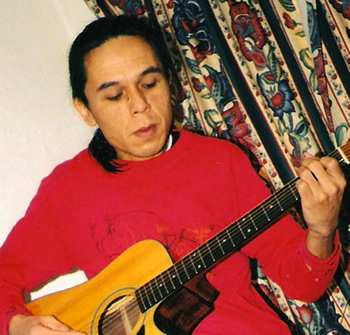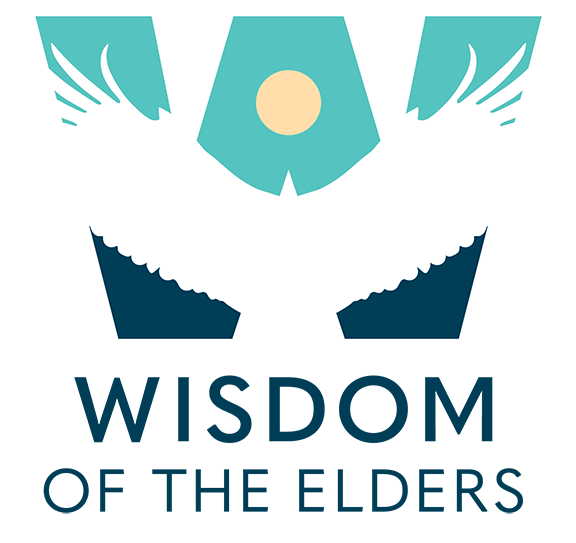A Convention of Satyrs
 My name is Spider Moccasin and I’m an enrolled tribal member of the Confederated Tribes of Warm Springs. I’m a Wasco/Warm Springs person.
My name is Spider Moccasin and I’m an enrolled tribal member of the Confederated Tribes of Warm Springs. I’m a Wasco/Warm Springs person.
I’m a cartoonist and a rock and roll musician I’m currently collaborating with a Yakama tribal member, Jay Nightwalker.
Now jay is a writer and he has crafted an amazing story called ‘A Convention of Satyrs.’ It’s all about a murder mystery that takes place in Portland, Oregon featuring the coyote trickster character set in a modern landscape of cars and automobiles and all the citizens in the city are animal characters. You see turtle and bear and beaver and eagle all wearing suits and ties going about their regular business.
Coyote is a rock and roll musician in this mythological Portland where animals are the citizens and coyote deals with the terrible jealousy of another musician who’s a very angry and desperate beaver. Jay Nightwalker is a wonderful singer/songwriter. I met him a couple of years back. We performed a benefit for the Native American Rehabilitation Association clinic here in Portland, Oregon. Since then he has shared with me numerous modern horror and science fiction stories. It’s very striking to take traditional mythological characters and place them in a modern context, but that’s exactly what Jay Nightwalker has done and provided a challenging and thrilling concept for comic book stories. Naturally, you can imagine that the murder mystery involves danger, excitement, and adventure and is it appropriate necessarily for small children, but coyote has always been used for lessons of good and evil right and wrong. Jay nightwalker’s story definitely deals with these concepts. As a cartoonist, I’m influenced by Native American cartoonists. Throughout the decades the underground comic book movement of the ’60s created the very first underground comic before Robert crumb. Jack Jackson created Godnose in 1964 and has influenced underground cartoonists ever since. This tradition continues with modern indigenous cartoonists like Jaimi and Gilbert Hernandez, but it traces all the way back to Crazy Cat by George Herrimann. George Herrimann was half black and half southwestern Indian, Hopi or Zuni I believe. His Crazy Cat character featuring Ignatz the mouse was a very popular character in the early 20th century. The modern cartooning storytelling that I illustrate follows up on all those traditions in a new and exciting way. Jay Nightwalker is my current writer/collaborator. He sends me scripts and I illustrate them in comic book form. Right now I’m working on inking these stories. I spent this summer working on this latest one ‘A Convention of Satyrs’, which takes place at Satyrcon in Portland, Oregon. It’s a modern example of punk rock and contemporary music trends used to reinvigorate Indian storytelling form. American Indians don’t just exist in the past we exist in the present and we use modern tools like basketballs and pickup trucks to great effects. An electric guitar is just as worthy a tool for American Indians. Sure enough, there are very popular American Indian rock and roll musicians out there across the United States like Black Fire, Gary Small, and Arigon Starr. In our story ‘A Convention of Satyrs’, the coyote’s portrayed as modern punk rock Indian musician because believe it or not such things exist. There are modern American Indian heavy metal musicians, Goth rock musicians, disco musicians, and musicians of all sorts. Yakama tribal member Jay Nightwalker sent me a wonderful script I’m illustrating to turn into a modern American Indian comic book. Who knows where this will go. Perhaps it will show up at pow wows. We’ll distribute it to all of our friends. Maybe we’ll create a website where folks can find our stories. Jay Nightwalker has also sent me wonderful science fiction scripts, which I hope to illustrate in the future. There’s a very involved flying saucer graphic novel that we hope to make before the end of this decade. This current story ‘A Convention of Satyr’ that Jay Nightwalker has written and that I’m illustrating in comic book form. It’s 36 pages long. It’s black and white. It’s a modern Native American horror story perhaps in the tradition of Stephen King’s work.
Although it does come to mind that Sherman Alexi, a Pacific Northwest writer from Wampinit up Jay Nightwalker’s way there in northern Washington. He’s very notorious for his brilliant storytelling. In fact, I’ve read two or three short stories of his that are examples of horror and science fiction. He claims to be influenced by Stephen king. So perhaps it’s a trend here in the Pacific Northwest. Jay Nightwalker and his storytelling is following up on that new development in the American native culture. American Indians deserve to have our own website, our own compact discs, our own DVDs, and our own films. Folks like Chris Eyre and Sherman Alexi are very inspirational to those of us in the creative media spectrum. We hope to use the Internet and modern techniques like animation and comic books. The great effect to communicate with our audience because contemporary Indians deserve to experience all the fruits of modern culture and I can’t wait until we see American Indians on Saturday Night Live or the Today Show as correspondents or comedians and certainly we deserve to be storytellers and writers and even comic book artists. Hey well, thank you very much. Again my name is Spider Moccasin.
Spider Mocassin
Residing in Portland, Oregon, Marcus Kevin Moseley better known, as Spider Moccasin is Wasco and Warm Springs and is enrolled in the Warm Springs Reservation. The Wascos were located in the Columbia River Gorge near the famous Celilo Falls until the treaty of 1855 relocated them to central Oregon on the Warm Springs Reservation. There are mountains, open plains, plateau basin and deep canyons carved and etched out of volcanic rock that the Warm Springs Tribe now shares with the Paiute and Wasco tribes in a confederacy. Spider’s mother, Rosella Leonard, is a well-known and respected Native Rights professional and their family, the Smith Clan, is involved with NW Tribal government.
Spider is well known for being a singer, songwriter, and artist in this era of life. He is also a muralist, cartoonist, and storyteller. All these talents all fall into the category of ‘storyteller’ in his imagination. He’s been making small-animated films as a place to combine music, storytelling, and cartoon skills. He’s a certified artist with a Bachelors’s degree from Pacific NW College of Art. Some of his storytelling for children involves coyote tales. Spider drew many episodes of coyote comic book stories from Indian tribes across the United States. His well knows classic stories focus on positive and encouraging fables. Some of his accomplishments include being nominated for a Hero’s Certificate from the Children’s Cancer Association, Save the Children National Indian Child Student of the Year, student body president at Pacific College of Art, a sabbatical at Parsons School of Design, second place in Oregon Art Open, articles in the Tigard Times and Oregonian newspapers, was interviewed by the New York Times, recently published stories in a comic book called ‘Serial Boxes’ at Pacific NW College of Art and has done dozens of live music performances recorded by KBOO radio station.
Spider’s ‘Fishermen’ story describes an experience in Bellingham, Washington with old Lummis’ at sea. They took him out into the bay and decided he talked too much. The fishermen took him to a sandbar and told him to be patient, follow their instructions, and wait right there until while they went out to retrieve their nets full of fish. Spider got on the sandbar and waited. And waited. And waited. And waited. They didn’t come back for a very long time and meanwhile, the sandbar began to disappear from under him. He was too far from shore, any islands, and Bellingham to swim across the icy water. He stood right where he was and finally the fishermen came back to get him. The Lummi fishermen said, “Good for you. You waited and you followed our instructions. You’re a man now.” Spider shivered during the ride back to shore. Spider along with his band, Spider Moccasin, does a version of The Fishermen in a rock and roll song to acknowledge this story.
The Creation Myth of the Wasco tells how coyote was swallowed by I`xt`l`itican, a feared mythical creature. Once inside the creature, Coyote gets lonely. Two humans are formed and they suggest that Coyote rub two sticks together to start a fire. The fire causes I`xt`l`itican to cough everyone out. The two humans land near Celilo Falls and are the first humans of the Wasco. Coyote lands near Pendleton and continues east.
Well known for organizing concept albums of presentations, Spider’s songs are shared with various ages and types of groups. Given a variety of venues, he chooses to play what is appropriate, depending on what is appropriate, and always ends with ‘Old War Horses’.
Spider’s most famous songs are: ‘Where Does The Wind Blow?’ (about the Umatilla nerve gas), ‘Kennewick Man’ and ‘Save Some Salmon For Me.’ All have been performed at dozens of live events like Indian Art Northwest, the Wykanushpum, and NARA & NAYA fundraisers.
Spider Moccasin
503-528-1857
